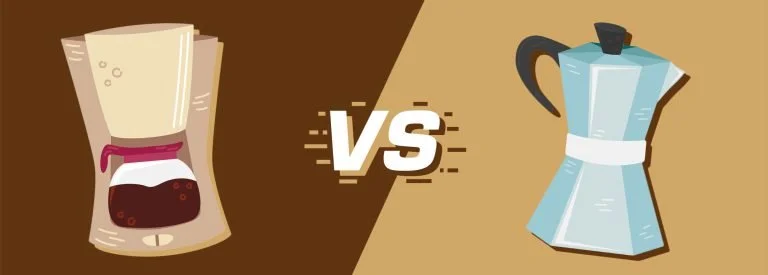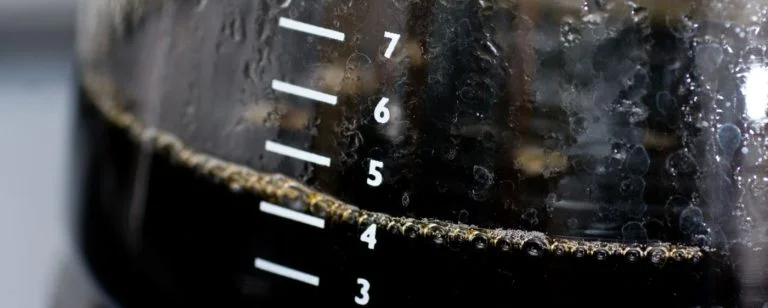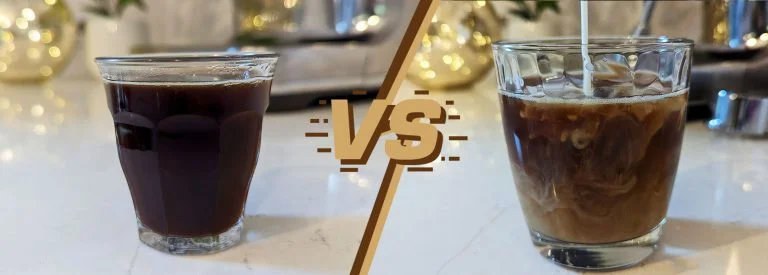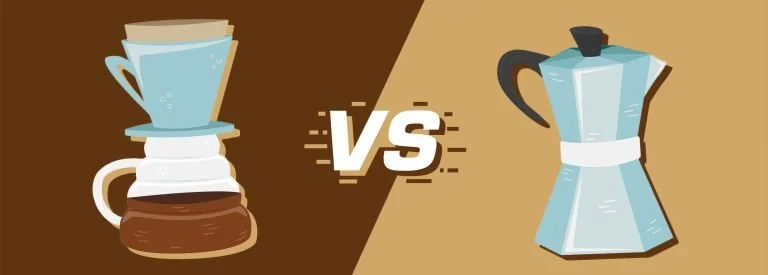Drip Coffee vs Cappuccino: A Coffee Pro’s Comparison
Cappucino and drip coffee might be two of the most popular drinks in the world, which is interesting since they are 2 completely different drinks.
This article will compare them from every possible angle, and after reading through, you’ll have a clear understanding of what sets these drinks apart.
Key takeaways: What’s the difference between a Cappuccino and drip coffee?
Drip coffee is black coffee made by pouring hot water over ground coffee, and letting the brew drip down through a filter. The resulting brew is much lighter and less dense than an espresso. Cappuccino is made using an espresso and adding frothed milk. It is a milky coffee drink, unlike black coffee.
Let’s get right into it!
What is Drip Coffee?
Drip coffee’s history can be traced back to the early 1900s and has since become common in many homes, especially in the USA. Also referred to as filtered coffee, this process consists of pouring heated water over ground coffee beans and letting the brew filter through. Here is an image of my Hario V60 01 at work.
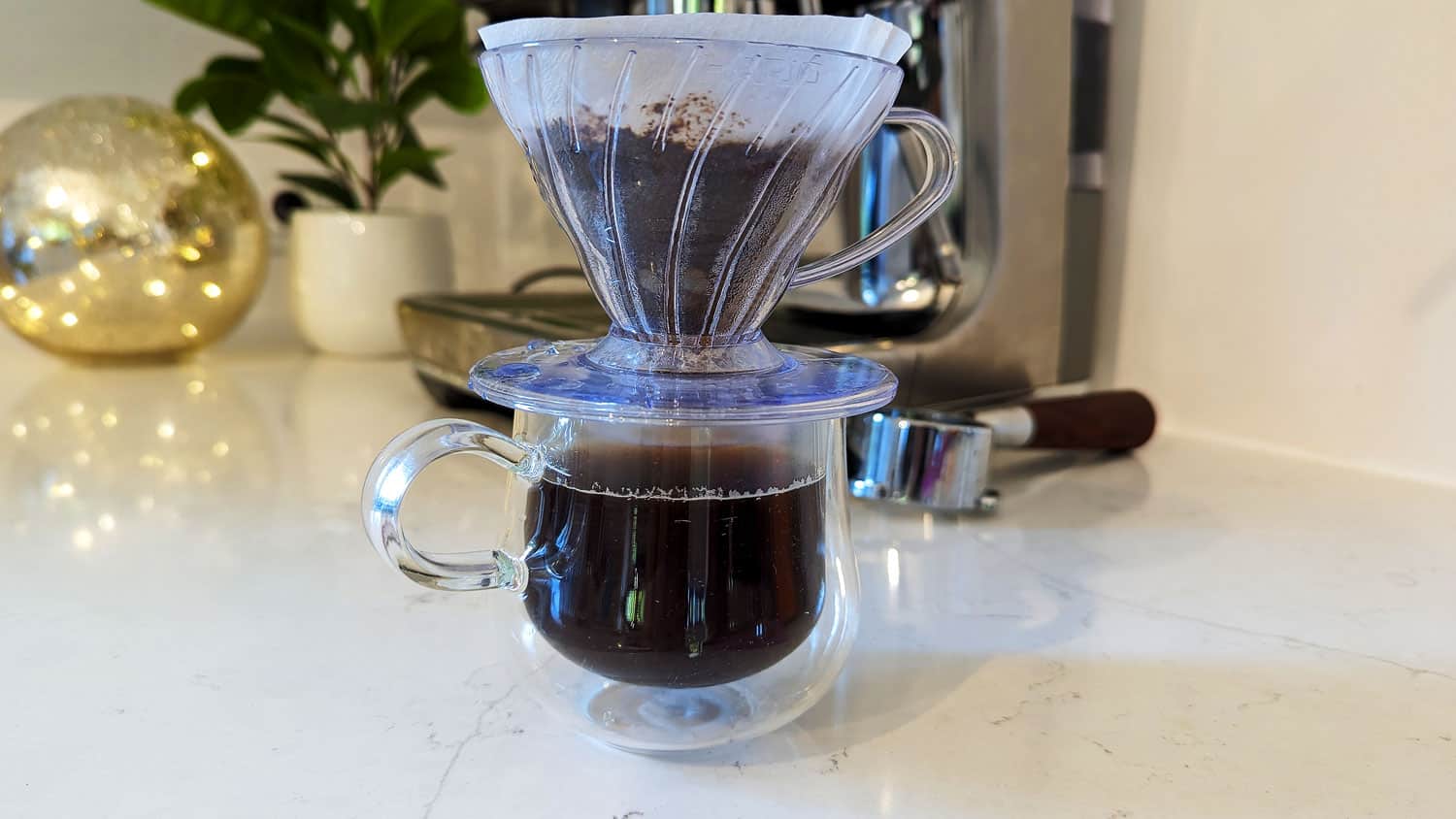
To get that picture-perfect cup, the proportion of coffee to water should be 1:16-1:17 – often called the Golden Ratio. This translates to around 11g of coffee for a 6oz (180ml) serving.
Once it’s brewed, a serving will contain 50-90 mg of caffeine, while containing only two calories for the same quantity. The best cup for drip coffee is a mug that accommodates 240-300 ml (8-10 oz). If you like to sip your coffee slowly, you can also use a double-walled mug.
The taste profile of drip coffee is softer compared to the different variations of espresso. It provides a straightforward yet clean flavor, allowing the subtle nuances from each coffee bean – such as hints of citrus or chocolate or even floral undertones – to really stand out and shine.
This has a lot to do with how the beans are sourced, and especially with how they are roasted. Charred black roasts will not convey anything else than burned coffee taste. Light to medium roast Arabica beans are best for drip coffe.
Here’s a quick guide on how to prepare drip coffee using a coffee machine:
- Grind your coffee to medium coarse.
- Add water to the machine’s reservoir.
- Place your filter and add the coffee grounds.
- Hit the “brew” button and wait for your coffee.
For a more detailed guide, read my article on how to use a drip coffee maker, but you can also make it using a V60, or a Chemex.
Next, I’ll discuss the specifics of a cappuccino, so you can see how different it is.
What is Cappuccino?
With its creation credited to the Capuchin Friar Marco d’Aviano in the 17th century, cappuccino has had centuries to evolve into the creamy coffee drink we enjoy today. This espresso-based drink is actually a blend of three equal parts of espresso, steamed milk, and a thick frothy milk foam layer on top.
Here is one I made for my wife, she likes it with a hint of cinnamon on top.
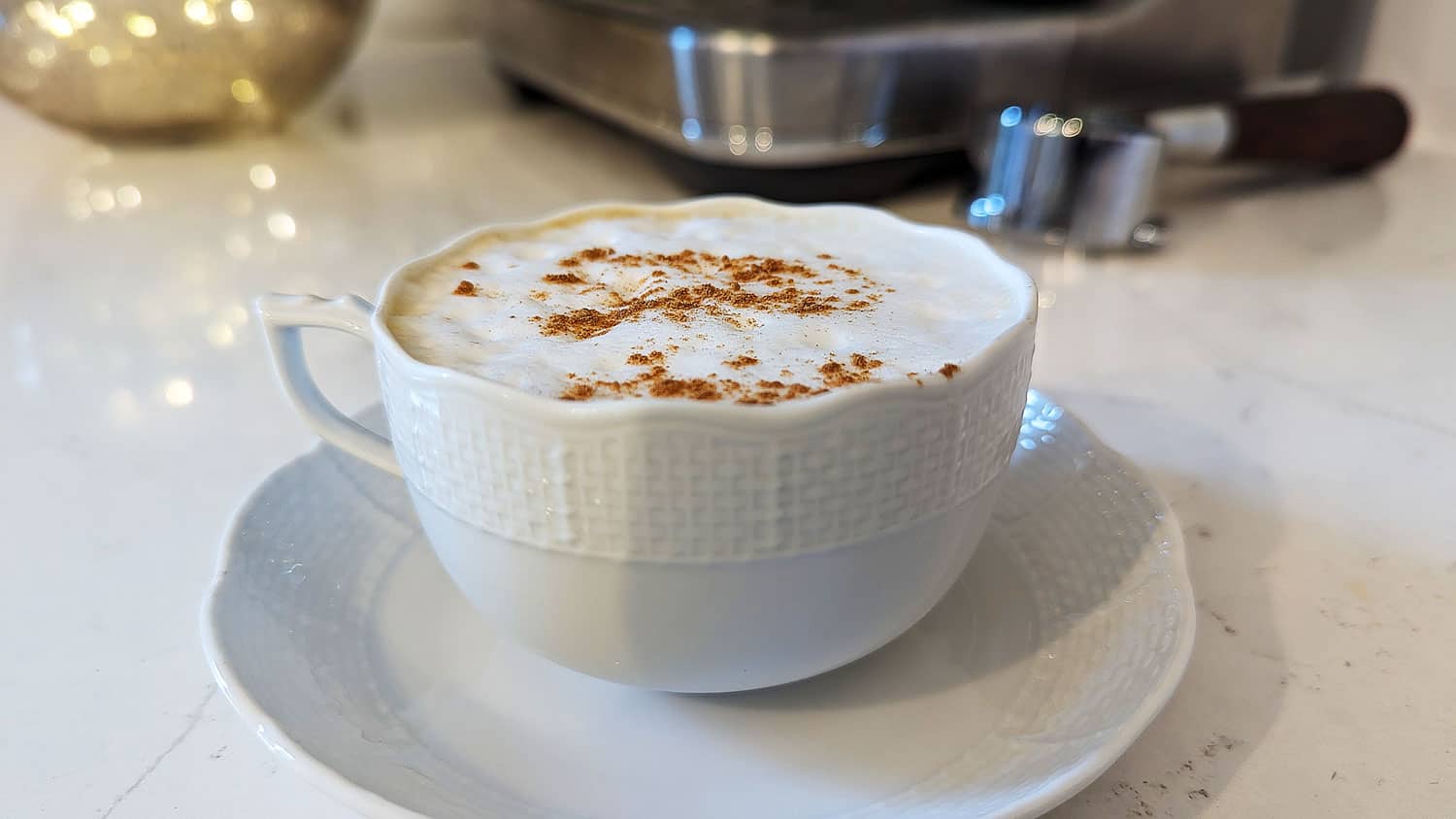
For the espresso base of the cappuccino, the coffee-to-water ratio is 1:2 to 1:3. The traditional Italian espresso requires 7g of ground coffee for a shot, while third-wave specialty coffee opts for 9g.
Next comes the milk froth, which you can prepare in numerous ways at home. You don’t need silky steamed milk as in a latte, so it’s easier to prepare. Once you froth your milk, pour it over the espresso and you’re good to go. The final texture is a blend of creamy frothed milk, dense espresso, topped with light, airy macrofoam.
When finished, a cappuccino measures 5 to 6 oz (150 to 180 ml) and is best served in a dome-shaped cappuccino cup with a capacity of 150-210 ml (5-7 oz). Counting caffeine, expect about 60-80 mg per 1 oz shot of espresso. Calorie-wise, a 150 ml cappuccino contains 74 calories, depending on the type of milk you use.
Speaking of milk, if you’re not a fan of full-fat cow’s milk, alternatives like soy, almond, or oat milk work just as well.
Sprinkling cocoa or cinnamon can enhance its flavor, adding a hint of spice or chocolatey richness.
Follow these steps for making a cappuccino at home:
- Prepare a single espresso.
- Pour cold milk into a steaming pitcher up to the bottom of the spout.
- Heat and steam the milk to around 160 degrees Fahrenheit, aerating it to create a bubbly, frothy texture with macrofoam.
- Pour the steamed milk and froth over your brewed espresso shot.
To learn more, check out my step-by-step guide on how to make a cappuccino.
Drip Coffee & Cappuccino: A Comprehensive Comparison
Here’s a breakdown of the characteristics of drip coffee and cappuccino:
| Aspect | Drip Coffee | Cappuccino |
|---|---|---|
| Taste and Texture | Mild, clean, can have notes of citrus, chocolate, or floral. Light and watery texture. | Bold espresso balanced with creamy milk. Creamy and frothy texture. |
| Coffee-to-Water Ratio | 1:16-1:17 | Espresso: 1:2 to 1:3 |
| Ingredient Ratio | Just coffee | 1 part espresso, 1 part steamed milk, 1 part frothy milk foam |
| Typical Serving Size | 6 oz (180 ml) | 5 to 6 oz (150 to 180 ml) |
| Caffeine Content | 50-90 mg per 6oz cup | 60-80 mg per 1 oz shot of espresso |
| Calories | 2 calories per 6 oz cup | Approx. 74 calories for 150 ml |
| Acidity | Generally moderate acidity | Low to moderate acidity |
| Brewing Difficulty | Easy | Home barista |
| Bean Roast | Light to medium roasts | Medium roasts; dark roasts also work |
Below are some key differences and similarities between the two coffee drinks:
- Ground Coffee Weight & Ratios: I use 11g of coffee grounds per 6oz cup for making drip coffee, sticking with a coffee-to-water ratio of 1:16 and 1:17. This is considerably more than the espresso’s 7-9g, with a coffee-to-water ratio of 1:2 to 1:3.
Drip coffee doesn’t add milk, while cappuccino requires frothed milk. - Taste: Drip coffee is milder and cleaner which reveals undertones of citrus or chocolate. A cappuccino is a different story, combining the strong espresso with the creamy milk and foamy milk froth.
- Volume, Calories, & Caffeine: Drip coffee comes in servings of 6 oz with 2 calories and 50-90 mg of caffeine. A cappuccino serving is similar at 5 to 6 oz, containing 74 calories and 60-80 mg of caffeine per 1 oz shot of espresso.
- Bean Roast: For drip coffee, I lean towards light to medium roasts as they maintain a bright and nuanced flavor profile. In contrast, cappuccinos made with medium, or even dark roasts strike a nice balance between the espresso and the creamy sweetness of milk. For best results in your cappuccino, check out my list of the the espresso coffee beans I have tried and can recommend.
- Steamed Milk: Milk is only used in a cappuccino, which is composed of equal parts espresso, steamed milk, and frothy milk foam. Aside from whole milk, you can use alternatives such as soy, almond, or oat milk.
If you’re perfecting your espresso-based coffees such as the cappuccino, you can check out my guide on how to steam milk. - Serving Suggestions: Drip coffee is a great addition to breakfast, and it’s quite versatile with its seasonal variations such as cinnamon coffee that I enjoy during the fall.
Meanwhile, cappuccino’s creamy texture complements chocolate, biscotti, or nuts. Sometimes I also add a sprinkle of ground cinnamon for added flavor.
So as you can see, drip coffee and cappuccino are different right from the start.
Do you have a favorite or are you still exploring to see which brew you like better? Share your thoughts in the comments section below.




